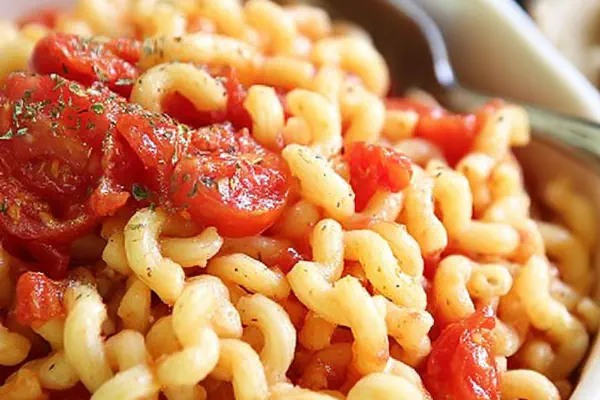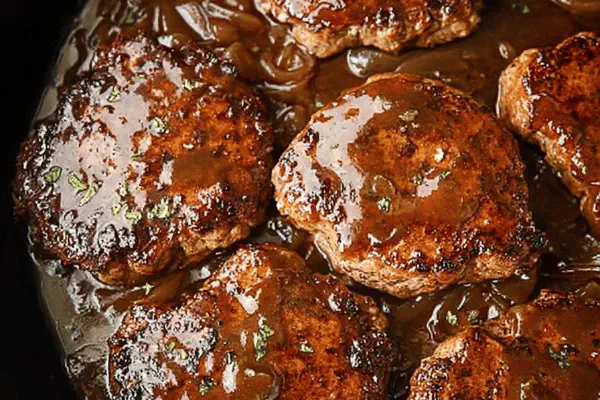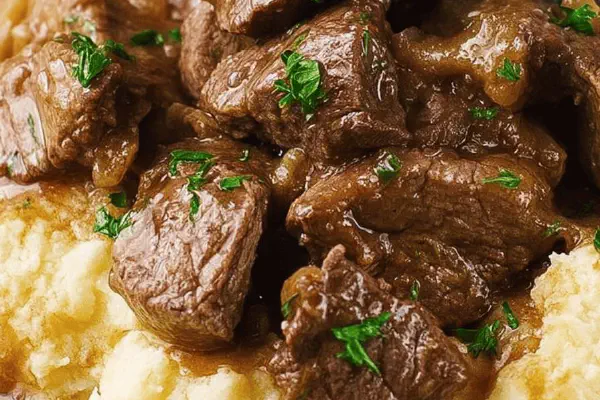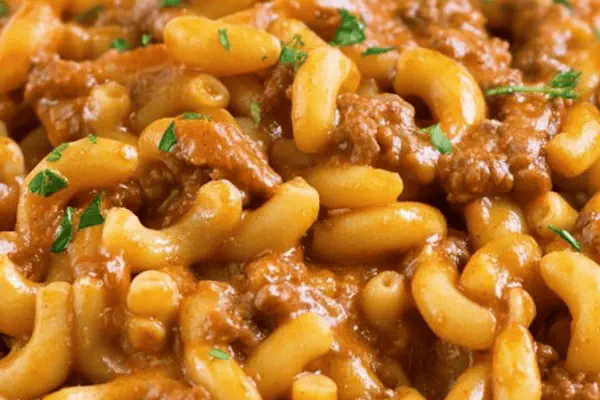Rustic Baked Macaroni Cheese
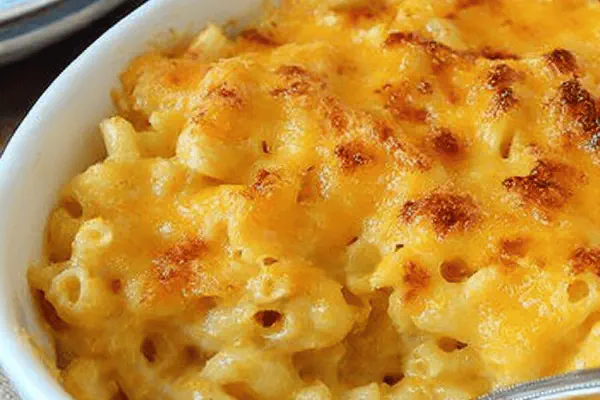
By Emma
Certified Culinary Professional
Ingredients
- 3 cups whole milk heated (microwave high 1 minute 20 seconds)
- 4 tablespoons unsalted butter
- 3 tablespoons all-purpose flour
- 1 teaspoon kosher salt
- ½ teaspoon freshly ground black pepper
- 1 ¾ cups shredded smoked Gouda cheese, divided
- 10 ounces elbow macaroni cooked al dente, drained
- 2 teaspoons Dijon mustard (twist ingredient)
About the ingredients
Method
- Preheat oven to 410°. Don’t just rely on timer — oven dryness can vary; hotter temp speeds crust formation without drying center.
- Microwave milk until edges bubble lightly, about 1 minute 20 seconds; stirring halfway to prevent skin. Warm milk helps slurry thicken faster.
- Melt butter low-medium in heavy skillet or Dutch oven until foam subsides and starts bubbling softly. Add flour all at once, whisk vigorously, no lumps allowed. 50 seconds is your target — too long and roux browns, altering cheese flavor.
- Remove from heat, slowly pour warm milk in thin steady stream while whisking furiously to avoid clumps or scorch spots. Return to stove medium-low and whisk non-stop. Sauce thickens slowly; after about 5 minutes watch texture — it should coat spoon like velvet, not gluey or runny.
- Hit the sauce with mustard, salt, pepper, then toss in 1 ½ cups Gouda. Stir until velvety and melted. Smoky cheese adds complexity, mild but not overpowering.
- Fold in cooked macaroni gently so noodles keep shape, not mush or break.
- Spoon mixture into buttered 2-quart baking dish. Scatter remaining ¼ cup Gouda evenly on top; this creates golden crust. If you want crunchier crust, sprinkle 1 tablespoon panko breadcrumbs adjusted from original.
- Bake 21 minutes. Watch for bubbling edges and rich amber color on cheese. Poking gently with fork: edges firm, middle jiggles slightly. This means it’s creamy inside but set.
- Remove from oven, rest 5 minutes for sauce to stabilize before diving in.
- If sauce turns grainy, struggled with flour lumps or overheated cheese; next time reduce heat a bit or whisk longer during milk addition. For overly dry pasta rescue: toss cooked noodles with splash olive oil before adding to sauce.
Cooking tips
Chef's notes
- 💡 Heat milk ahead until just bubbling edges appear. Skin forms fast so stir often. Warm milk speeds slurry thickening better than cold. Microwave quick method makes sense but watch closely. Milk temp underlies sauce texture; too cool, lumps form. Timing with milk heat variable by microwave wattage—test your machine first.
- 💡 Butter and flour roux low-medium heat till blonde, no browning. Whisk fast and hard after flour addition, lumps kill sauce smoothness. Roux color matters—too dark means bitter roux taste. Aim 50 seconds max. Foam reduces as butter melts fully, wait for that soft bubbling sound to start before flour in.
- 💡 Add milk very slowly while whisking nonstop. Slow pour prevents scorching and clumping. Once mixed, return to medium-low heat with constant whisk to coax gradual thickening. Watch texture closely: sauce coats back of spoon like velvet, not paste or runny. Five minutes is typical but adjust by feel not clock.
- 💡 Fold cooked pasta gently not to break noodles or mash. Al dente cooked elbows keep bite through baking stage; mushy pasta ruins mouthfeel and texture contrast with crust. Over stirring squashes pasta, making gluey mouth experience. Timing pasta cook and drain important; water temp and salt level impact bite.
- 💡 Add Dijon mustard off heat right before cheese to wake flavor and smooth sauce. Mustard is subtle but shifts sauce umami balance, cutting richness without overt sharpness. Skipping mustard makes sauce flatter and duller. Fold cheese in gradually, off heat prevents grainy or oily sauce breakdown.
- 💡 Baking at 410°F is a balance: high enough for fast crust, low enough to keep creamy center intact. Watch edges bubble, amber cheese on top signals doneness. Fork test key: edges firm, middle jiggles slightly, not liquid. Overbaking dries sauce; underbaking leaves raw roux flavor and weak crust.
- 💡 Rest bake 5 minutes minimum to let sauce set and stabilize before serving. Avoids runny pouring from still-hot sauce. Rest time lets residual heat finish thickening inside while crust cools slightly, improving slice structure. Skipping rest risks sloppy serving experience.
- 💡 Breadcrumb topping optional but adds crunch and textural contrast. Panko recommended for light crisp texture without weighing down crust. If skipping toppings, brush dish thoroughly with butter to prevent sticking and help cheesy crust cling. Breadcrumb quantity adjustable — 1 tablespoon enough for subtle crunch.
Common questions
Can I use cheddar instead?
Yes, but texture changes. Sharp cheddar burns easier, sauce can be grainy if overheated. Combine with fontina or Gruyère to soften sharpness and aid melt. Smoked Gouda gives smoother melt and smoky notes—cheddar alone missing that depth here.
Why is my sauce grainy sometimes?
Usually cheese overheated or roux browned. Add cheese off heat only once sauce thickened. Whisk constantly to avoid lumps. Use low-medium temp when melting butter and adding flour. Skipping steps or rushing causes texture issues. If grainy, next time cut heat earlier.
What if pasta is mushy?
Overcooked pasta will glue up in sauce and bake into gluey mess. Cook al dente with bite, drain well. Before folding in, toss noodles with a splash of olive oil to separate if needed. Also don’t overmix after adding pasta to keep texture intact, folding gently mandatory.
How to store leftovers?
Refrigerate tightly covered up to 3 days. Reheat gentle and slow, low oven or microwave intervals to avoid drying or cracking crust. Sauce thickens cold; add splash milk or broth if too thick. Can freeze but sauce may separate, thaw overnight carefully. Crunchy crust won't stay same.
